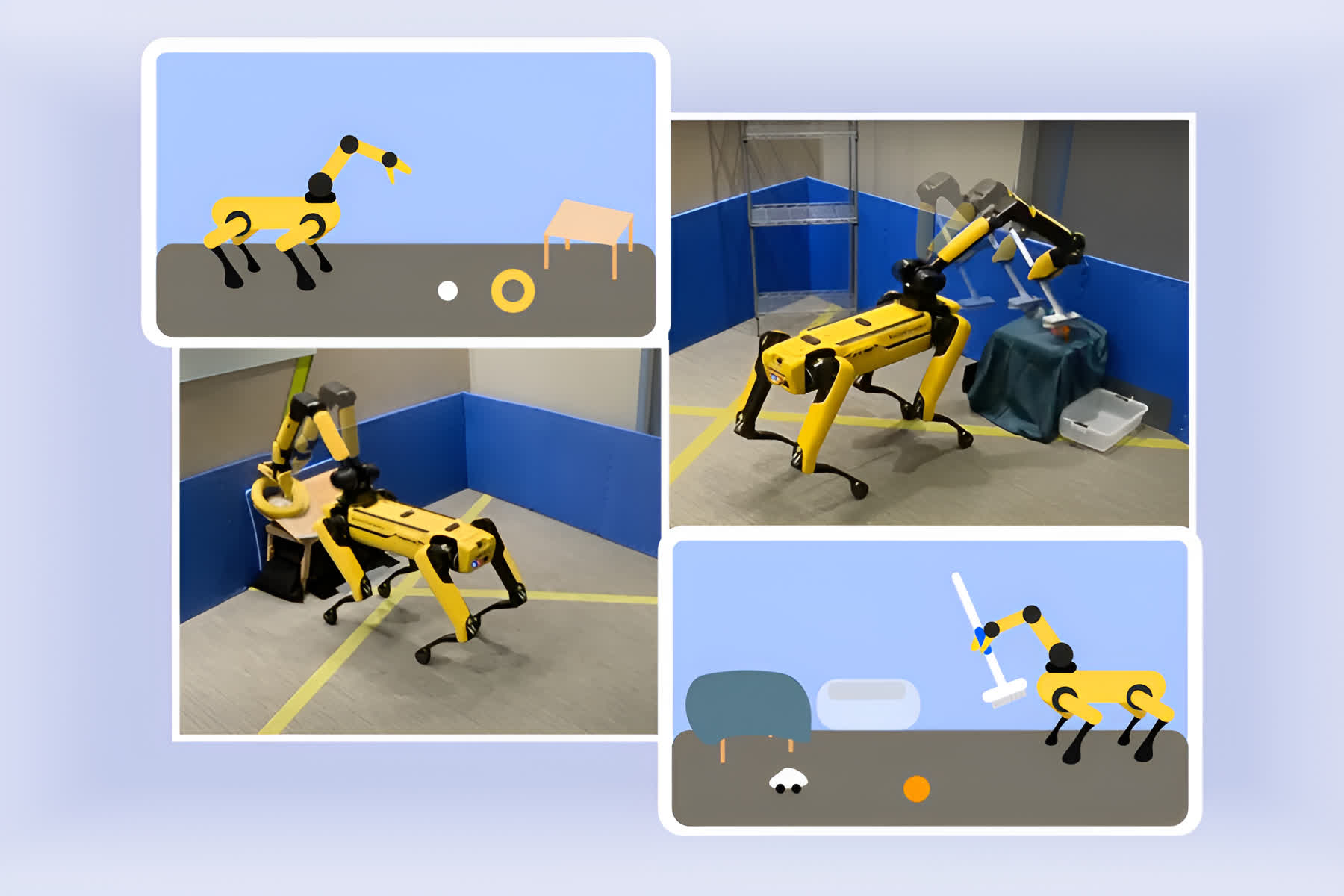Serving tech enthusiasts for over 25 years.
TechSpot means tech analysis and advice you can trust.
What just happened? Researchers have developed an algorithm that allows robots to autonomously identify weaknesses in their skills and then systematically practice to improve them. It's akin to giving the machines their own homework assignments.
The new "Estimate, Extrapolate, and Situate" (EES) algorithm, developed by the MIT Computer Science and Artificial Intelligence Lab (CSAIL) and The AI Institute, was recently presented at the Robotics: Science and Systems conference. Here's how it works:
First, the robot uses its vision system to assess its surroundings and the task at hand, such as cleaning up a room. The algorithm then estimates how well the robot can currently perform specific actions, like operating a broom for sweeping. If EES determines that additional practice on a particular skill could enhance overall performance, it initiates that practice.
The researchers tested EES on Boston Dynamics' Spot quadruped robot, which already has a strong track record with tasks like these, especially with an arm attachment on its back. This time, however, it worked smarter, not harder.
The algorithm guided the robot in practicing and refining useful skills. In one trial, EES enabled Spot to learn how to securely place a ball and ring on a slanted table in just about three hours. In another, the robot improved at the seemingly random task of sweeping toys into a bin after approximately two hours of focused practice sessions.

Previous frameworks would likely have required over 10 hours for Spot to achieve proficiency in either of these useful skills.
While these tasks were relatively basic, the researchers note that this technology could eventually produce robots that learn how to improve their performance in various settings, such as factories, coffee shops, households, or hospitals.
Looking ahead, they hope to integrate simulators so robots can combine virtual and physical practice sessions, potentially speeding up the learning process. They also aim to develop algorithms that can reason over sequences of practice attempts rather than focusing solely on isolated skills.
"Enabling robots to learn on their own is both incredibly useful and extremely challenging," Danfei Xu, a Georgia Tech professor and research scientist at Nvidia AI, told MIT News. "In the future, home robots will be sold to all sorts of households and expected to perform a wide range of tasks. We can't possibly program everything they need to know beforehand, so it's essential that they can learn on the job."
With a digital dojo like EES to fall back on, the robots of tomorrow may be able to master new skills as easily as humans – through good old-fashioned practice. The paper for this project can be found on Arxiv.